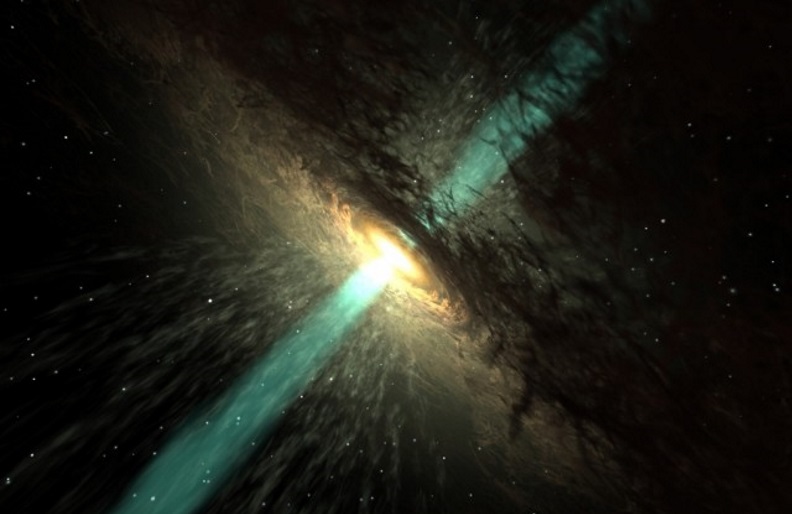A newly deployed space telescope has struck pay dirt almost immediately, discovering a quasar – a superheated region of dust and gas around a black hole – that is releasing jets at least seventy times hotter than was thought possible.
RadioAstron is unusual among space telescopes in operating at radio wavelengths. Although the telescope itself is small compared to giant ground-based dishes (10 meters or 33 feet across), it is capable of combining with ground-based instruments operating at the same wavelengths. Together they produce images with the resolution of a single telescope as wide as the distance between them, far exceeding collaborations between dishes half a world apart.
One of the first targets for this extraordinary tool was the quasar 3C 273, the first of these enormously bright objects to be identified, and one of the most luminous. Despite being 4 trillion times as bright as the Sun, 3C 273 is hard to study, located an estimated 2.4 billion light-years away at the center of a giant elliptical galaxy.
Something that bright has to be mind-bendingly hot, and the same applies to the radiating jets 3C 273 spits out. Models suggested that it was impossible for these jets’ temperatures to exceed 100 billion degrees Kelvin, at which point electrons produce radiation that should quickly cool them in what is known as the inverse Compton catastrophe. However, in The Astrophysical Journal Letters an international team has estimated the true temperature.
“We measure the effective temperature of the quasar core to be hotter than 10 trillion degrees!” said Dr. Yuri Kovalev, RadioAstron project scientist, in a statement. “This result is very challenging to explain with our current understanding of how relativistic jets of quasars radiate.”
Combining with Earth-based telescopes, including Arecibo and the Very Large Array, RadioAstron examined the radiation from 3C 373 at wavelengths of 18, 6.2, and 1.35 centimeters (7, 2.4, and 0.5 inches) providing both an overall temperature estimates that varied from 7 to 14 trillion degrees, and a view of the substructure of the quasar’s jets.
“Only this space-Earth system could reveal this temperature, and now we have to figure out how that environment can reach such temperatures,” said Kovalev in a separate statement. “This result is a significant challenge to our current understanding of quasar jets.”
The resolution made possible by this collaboration was so detailed that the team was able to detect the scattering effects on their measurements of variations in the ionized interstellar medium within the Milky Way. “This is like looking through the hot, turbulent air above a candle flame,” said first author Dr. Michael Johnson, of the Harvard-Smithsonian Center for Astrophysics. “We had never been able to see such distortion of an extragalactic object before.”
The authors explained that when “averaged over long timescales – days to months – the scattering blurs compact features in the image, resulting in lower apparent brightness temperatures,” part of the reason these extraordinary temperatures had not been recognized before. Over shorter periods the scattering creates the impression of bright and dark spots known as “refractive substructure.”
RadioAstron has been in space since 2011, but it has taken time to analyze the first observations. Knowing that the maximum baseline it can provide is more than double the 171,000 kilometers (106,000 miles) used in this case, astronomers can’t wait to see what it discovers next.
